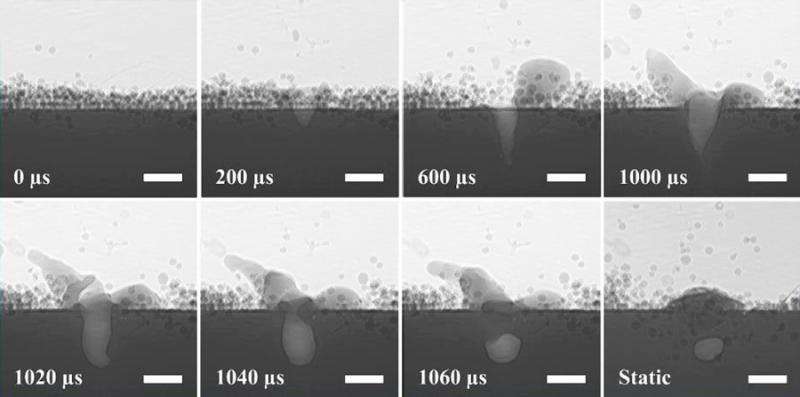Team efforts accelerate 3-D printing journey

With the development of additive manufacturing—often referred to as 3-D printing—engineers are limited only by their imagination—and the quality of the part that they can produce. By heating plastic or metal powders with lasers, scientists have already built cars, pedestrian bridges and even artificial jawbones layer by layer. This technology has the potential to transform manufacturing as engineers use titanium and other metal alloys to tap raw materials more efficiently, which in turn will reduce product costs and weight and shorten supply chains.
Yet metal additive manufacturing faces roadblocks. Printed materials often contain structural defects and vary from their designs, forcing engineers to repair their finished pieces or start over from scratch. And not all physics behind the process are well understood. Much of the research in this area involves trial and error—a costly and time-consuming way to innovate.
To address these problems, scientists from the U.S. Department of Energy's (DOE) Argonne National Laboratory, Carnegie Mellon University, and Missouri University of Science and Technology are investigating the entire 3-D printing process, including the material properties of the metal powders and how the laser "melts" and shapes those powders into the desired components, to discover both how defects form and methods to avoid them.
For the first time, scientists recently peered inside materials formed by 3-D printing in real-time as the laser molded the metal powders into shapes. As the laser "prints" metal components, Argonne physicist Tao Sun and his collaborators have a front-row seat to its inner workings via the intense synchrotron X-rays at the Advanced Photon Source, a DOE Office of Science User Facility located at Argonne.
"The laser-metal interaction happens very quickly," said Sun. "Fortunately, we captured the process at 50,000 frames a second using the high-speed X-ray instrument at the Advanced Photon Source. We can study the resulting movie frame by frame to examine how the material's microstructure, especially defects and pores, form."
The team showed they can observe and quantify many metal 3-D printing characteristics—including melt pool size/shape, powder ejection, solidification, porosity formation and phase transformations.
Sun will share his conclusions with partners in academia and other national laboratories who are building models to reliably predict the characteristics of the printed materials. These models also predict the dynamics of the process—such as how the laser melts the powder, when the powder changes into gases and liquids, and so on.
Meanwhile, Aaron Greco, a principal materials scientist at Argonne and project co-leader for Argonne's additive manufacturing effort, enhances the models from a different angle. "After printing, we examine the product's resulting microstructure and defects," said Greco. "We use a variety of techniques including optical and electron microscopy and even tomography at the Advanced Photon Source, to validate the models."
The result is a virtuous loop in which the experimental data feeds into models of additive manufacturing, and then the improved models are tested by more elaborate and insightful experiments. This interplay between modelers and experimentalists is essential to clearly and accurately understanding the underlying materials physics required to make 3-D-printing truly reliable.
Although this loop is vital to their fundamental understanding of additive manufacturing, the researchers' ambitions extend further.
"Our goal is to explore new possibilities," said Greco. "Industries are currently limited to a certain set of metal alloys. But what about new ones? If you understand the physical properties related to how to print new alloys, you can adopt these into the process and speed up the reliability of printing."
Industries are also limited by the extremely detailed models currently required to define the printing process for complex parts. By reducing these models to just the handful of elements that affect quality and reliability, the team hopes to make the models faster and more suitable for industry.
Ultimately, Argonne's efforts will achieve the best of both worlds: Scientists will uncover the dynamic mysteries of metal additive manufacturing, while industries will thrive with blueprints to rapidly print cost-effective and reliable products.
"Our work will not only help industries improve efficiency and performance, but increase the likelihood that metal additive manufacturing will be more widely adopted in other applications," Greco said.
Sun's research was reported in the Scientific Reports article "Real-time monitoring of laser powder bed fusion process using high-speed x-ray imaging and diffraction." The experiments were performed at the Advanced Photon Source's 32-ID-B beamline.
More information: Cang Zhao et al. Real-time monitoring of laser powder bed fusion process using high-speed X-ray imaging and diffraction, Scientific Reports (2017). DOI: 10.1038/s41598-017-03761-2




















